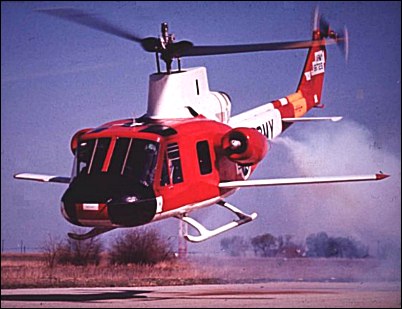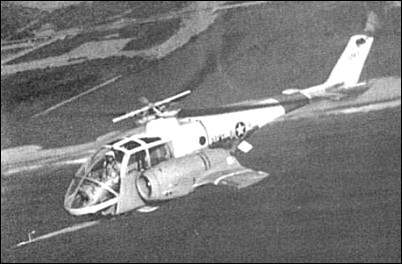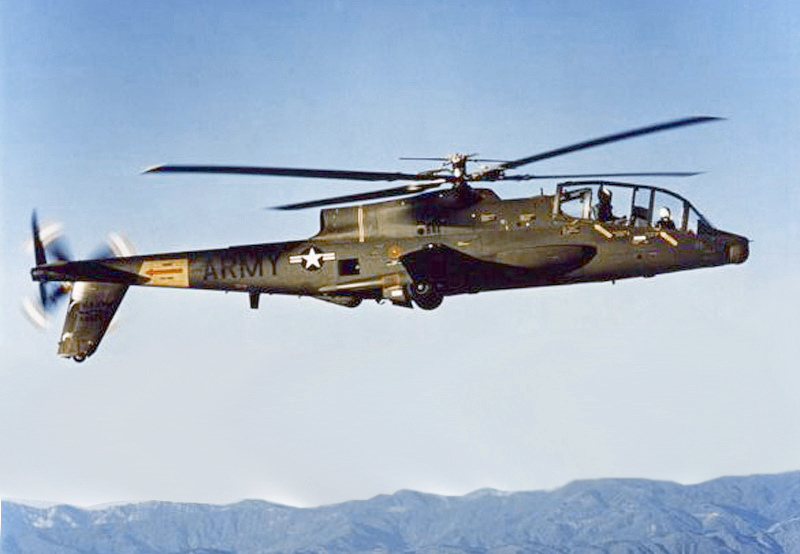Chinooks, further upgrade for forward flight in gyroplane mode
Thread Starter
Join Date: Jun 2014
Location: Singapore
Posts: 17
Likes: 0
Received 0 Likes
on
0 Posts
Chinooks, further upgrade for forward flight in gyroplane mode
I am not an engineer but may I discuss a question.
It is possible to configure the engines of Chinooks to provide forward thrust for forward flight, such that the rotors can be unloaded and even fly as gyroplane in forward flight.
Even if you may need to upsize the engine, would this be a easier (cheaper, safe in terms of less technological risks) way of getting more speed, rather than to having to put additional pusher propellers like in the case of X2?
Thank you.
It is possible to configure the engines of Chinooks to provide forward thrust for forward flight, such that the rotors can be unloaded and even fly as gyroplane in forward flight.
Even if you may need to upsize the engine, would this be a easier (cheaper, safe in terms of less technological risks) way of getting more speed, rather than to having to put additional pusher propellers like in the case of X2?
Thank you.
Helicopter engines are designed to extract the maximum energy from the fuel burnt and send it to the gearboxes, with little left over at the tailpipe, maybe 50lb thrust.
Turbojet engines take as little as possible from the fuel burnt to leave it with more energy blasting out the back, i.e. thrust. Completely different designs.
And for a Chook to turn into a gyrocopter, the blades have to go from sucking air in at the top and pushing it down to generate lift and thrust (and being tilted forward), to then go to being tilted back and having air come in from underneath, and extract energy from it to stay up (autorotation mode). Again, a big jump to make.
With pusher props from another engine, and with stubby wings to provide lift, the rotors can be unloaded (not turned into gyrocopters), which just means it can fly with less collective lever, using less fuel.
Turbojet engines take as little as possible from the fuel burnt to leave it with more energy blasting out the back, i.e. thrust. Completely different designs.
And for a Chook to turn into a gyrocopter, the blades have to go from sucking air in at the top and pushing it down to generate lift and thrust (and being tilted forward), to then go to being tilted back and having air come in from underneath, and extract energy from it to stay up (autorotation mode). Again, a big jump to make.
With pusher props from another engine, and with stubby wings to provide lift, the rotors can be unloaded (not turned into gyrocopters), which just means it can fly with less collective lever, using less fuel.
The Boeing 347 was a lift compounded version of the Chinook to unload the rotor system. It was abandoned after flight tests as not providing a big enough advantage to warrant the development costs as the US Army at the time was perfectly happy with what they had. Nowadays, with advances in digital engine and rotor control, and more advanced modelling of aerodynamics, it would likely be a smoother and easier process. However, there would still need to be a requirement to do so - and a "clean sheet" design may well be more efficient.....
Join Date: Jul 2011
Location: Secret hide-out in the Rocky Mtns
Age: 73
Posts: 22
Likes: 0
Received 0 Likes
on
0 Posts
If there is a wing providing lift, then the retreating blade doesn't have to work so hard, and the stall will occur at a higher speed.
And Vne is less dependent on RBS than other factors.
And Vne is less dependent on RBS than other factors.
The "compound helicopter" operates on the principle that in the cruise the wing generates the lift to carry the weight while the rotor is run at zero (collective) pitch and is just used for pitch/roll control (cyclic). At zero pitch there is no retreating-blade stall. But this is only true for a proper compound helicopter where there is both a fixed wing AND a separate means of forward propulsion.
PDR
PDR
Join Date: May 2017
Location: The Great Sovereign State of Texas
Posts: 19
Likes: 0
Received 0 Likes
on
0 Posts
Being an old, stubborn-ass, died in the wool, West Texas boy who cut his teeth on the stuff coming out of Ft. Worth (Hurst) way back in the day..., I'd be doing myself a huge injustice if I didn't mention the Bell 533. Late 1950's through late 1960's technology.
(...being that I still don't have my secret clearance to post pictures, y'all just gonna have to "cut and paste")

4.bp.********.com/-2vTNUzqr48c/T1nwZdarL0I/AAAAAAABVWY/gtTTxozj7H8/s1600/Bell533-bia2.jpg


(...being that I still don't have my secret clearance to post pictures, y'all just gonna have to "cut and paste")

4.bp.********.com/-2vTNUzqr48c/T1nwZdarL0I/AAAAAAABVWY/gtTTxozj7H8/s1600/Bell533-bia2.jpg


Last edited by Senior Pilot; 29th Jan 2018 at 04:47. Reason: Fix image links: blog spot will not work on PPRuNe
Join Date: Oct 2002
Location: 1 Dunghill Mansions, Putney
Posts: 1,797
Likes: 0
Received 1 Like
on
1 Post
Well the examples I would have chosen would have been the Lockheed experimental XH-51A:

And the AH-56 Cheyenne attack helicopter developed as a result:

The AH-56 Cheyenne programme developed and matured most of the features seen on subsequent attack helis - integrated nav/attack, helmet-slaved gunsighting etc.
PDR

And the AH-56 Cheyenne attack helicopter developed as a result:

The AH-56 Cheyenne programme developed and matured most of the features seen on subsequent attack helis - integrated nav/attack, helmet-slaved gunsighting etc.
PDR
Join Date: Apr 1998
Location: Mesopotamos
Posts: 5
Likes: 0
Received 0 Likes
on
0 Posts
I suspect if/when the all electric tail rotor becomes a reality then it would be quite a simple task to make it pivot around from providing anti-torque at low speed to providing forward propulsion at high speed.
Thread Starter
Join Date: Jun 2014
Location: Singapore
Posts: 17
Likes: 0
Received 0 Likes
on
0 Posts
Regarding this above concept ("to make it pivot around from providing anti-torque at low speed to providing forward propulsion at high speed"), I have also been thinking about similar concept.
But, there will still be the problem of RBS, unless there is a set of fixed wing, right?
Join Date: Oct 2002
Location: 1 Dunghill Mansions, Putney
Posts: 1,797
Likes: 0
Received 1 Like
on
1 Post
Charlie,
I don't believe so. The last time I saw ULOR referenced was at the AUSA annual convention in October 2011, 3½ years after the concept first appeared at AHS Forum 64 (and 4 years after the idea was patented).
One development that does appear to be proceeding is installation of the CH-53K's 7,500 shp GE T408 engine on the CH-47F, in place of the current 4,867 shp T55-L-714A. The T408 - whose heritage includes the T407 prop unsuccessfully offered for the C-130J in the early 1990s - will nearly quadruple the Chinook's installed power from the 1,940 shp YT55-L-5 installed in the original YHC-1B.
I/C
I don't believe so. The last time I saw ULOR referenced was at the AUSA annual convention in October 2011, 3½ years after the concept first appeared at AHS Forum 64 (and 4 years after the idea was patented).
Those engines look like they were borrowed from a Hercules.
I/C
Avoid imitations
Join Date: Nov 2000
Location: Wandering the FIR and cyberspace often at highly unsociable times
Posts: 14,573
Received 415 Likes
on
218 Posts
Thanks everyone for all the comments and input.
Regarding this above concept ("to make it pivot around from providing anti-torque at low speed to providing forward propulsion at high speed"), I have also been thinking about similar concept.
But, there will still be the problem of RBS, unless there is a set of fixed wing, right?
Regarding this above concept ("to make it pivot around from providing anti-torque at low speed to providing forward propulsion at high speed"), I have also been thinking about similar concept.
But, there will still be the problem of RBS, unless there is a set of fixed wing, right?
[QUOTE
Regarding this above concept ("to make it pivot around from providing anti-torque at low speed to providing forward propulsion at high speed"), I have also been thinking about similar concept.
[/QUOTE]
I think you'll find someone already had that idea in the 1930's, its called the Gyrodyne.
Regarding this above concept ("to make it pivot around from providing anti-torque at low speed to providing forward propulsion at high speed"), I have also been thinking about similar concept.
[/QUOTE]
I think you'll find someone already had that idea in the 1930's, its called the Gyrodyne.






